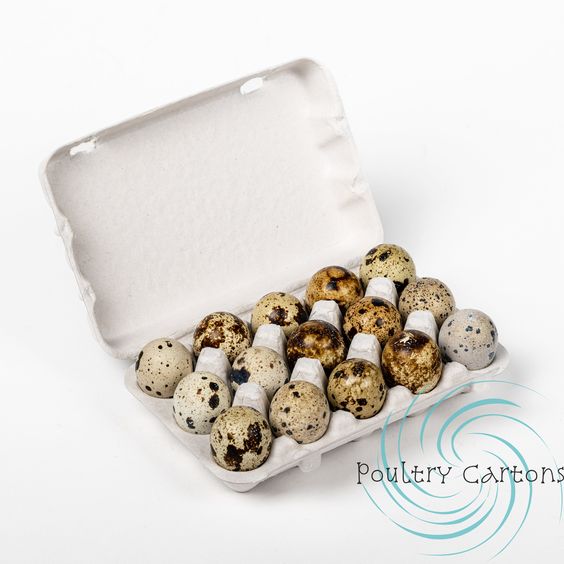Egg packaging is a crucial aspect of the egg industry, ensuring the safe transportation, storage, and presentation of eggs. Among the many options available, cardboard egg cartons, pulp egg cartons, and black egg cartons have gained significant attention for their distinct features and benefits. In this article, we’ll explore each type, highlighting their advantages and why they’re essential for producers and consumers alike.
Key Benefits of Cardboard Egg Cartons:
Eco-Friendly
Cardboard egg cartons are typically made from recycled materials and are themselves recyclable and biodegradable. This makes them an excellent choice for environmentally-conscious consumers and producers aiming to reduce their carbon footprint.
Cost-Effective
Compared to other packaging options, cardboard cartons are highly affordable to produce. Their lightweight nature also reduces shipping costs, making them a cost-effective solution for mass egg producers.
Customizable
Cardboard cartons offer a blank canvas for branding. They can be easily printed with logos, marketing messages, or nutritional information, providing an opportunity for businesses to create personalized and recognizable packaging.
Good Protection
Despite being lightweight, cardboard offers strong protection for eggs, keeping them safe from cracking during transport and handling.
Pulp Egg Cartons: The Sustainable Alternative
Similar to cardboard cartons, pulp egg cartons are made from molded pulp—recycled paper or cardboard that’s been pulped and reshaped into an egg carton. Pulp cartons are celebrated for their environmental benefits and natural, rustic look.
Key Benefits of Pulp Egg Cartons:
Sustainable and Biodegradable
Pulp egg cartons are highly sustainable. Since they are made from recycled materials, they contribute less waste to the environment, and their biodegradable nature ensures they break down naturally after disposal.
Durability
Pulp cartons are sturdier than cardboard in certain situations, offering excellent protection for eggs. The molding process creates snug pockets for each egg, reducing the risk of movement and breakage during transit.
Moisture Absorption
One unique benefit of pulp cartons is their ability to absorb moisture. This can be particularly beneficial in humid environments, where moisture could otherwise affect the quality of the eggs.
Rustic and Natural Appeal
Pulp cartons often have a rustic appearance, which can appeal to consumers seeking organic or farm-fresh products. Many smaller, boutique egg producers opt for pulp cartons to give their products a handcrafted, eco-friendly image.
Black Egg Cartons: The Modern and Premium Look
Black egg cartons are a contemporary and visually striking alternative to traditional packaging. While they can be made from cardboard, plastic, or pulp, their defining feature is their sleek black color, which adds a touch of sophistication and premium appeal.
Key Benefits of Black Egg Cartons:
Aesthetic Appeal
Black egg cartons exude a premium, modern look that sets them apart from standard packaging. Their sleek appearance is often associated with luxury and high-end products, making them ideal for producers who want their eggs to stand out on the shelves.
Enhanced Branding Opportunities
Black cartons provide an elegant backdrop for branding. Logos, text, and designs in contrasting colors—such as white, gold, or silver—can create a visually appealing package that enhances brand recognition and attracts consumers.
Protection from Light
The dark color of black egg cartons offers added protection against light, helping to preserve the freshness of the eggs. This is particularly beneficial for higher-end products where quality and shelf life are priorities.
Customizable Material Options
Black egg cartons can be made from various materials, including cardboard, pulp, or plastic, allowing producers to choose the option that best aligns with their brand’s sustainability goals or aesthetic preferences.
The Purpose of Egg Cartons
Eggs are delicate and prone to cracking if not handled carefully. Egg cartons are designed to prevent this by keeping the eggs separate and providing cushioning against external pressure. They also offer a convenient way to display and market eggs, with the packaging often providing branding space for producers.
Materials Used in Egg Cartons
Paperboard and Cardboard
Paperboard and cardboard are among the most widely used materials for egg cartons. These cartons are environmentally friendly, as they are often made from recycled materials and can be recycled again after use. They offer excellent protection for eggs and can be customized for branding purposes.
Plastic Egg Cartons
Plastic egg cartons are typically made from PET (Polyethylene Terephthalate), a material that’s recyclable and durable. These cartons provide superior visibility, allowing customers to inspect eggs without opening the carton. They are also moisture-resistant, making them ideal for colder storage.
Styrofoam Egg Cartons
Styrofoam is another option, offering excellent insulation and protection. However, it is less environmentally friendly compared to cardboard and plastic cartons, as Styrofoam is not biodegradable and can take centuries to decompose.
Conclusion
Cardboard, pulp, and black egg cartons each offer unique benefits depending on the needs of the producer and the expectations of the consumer. Cardboard cartons are cost-effective and customizable, pulp cartons offer superior sustainability and protection, and black egg cartons provide a premium aesthetic appeal. The choice of carton can influence not only the eggs’ safety and freshness but also how a brand is perceived in the marketplace.
